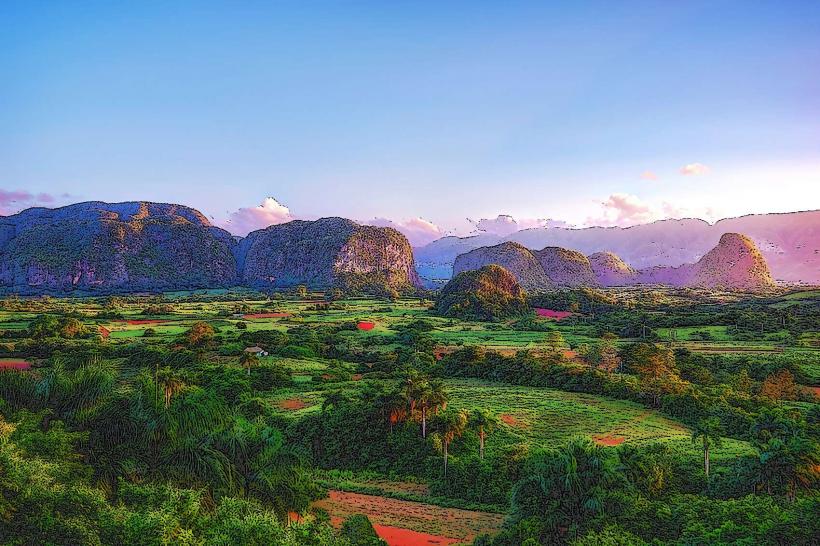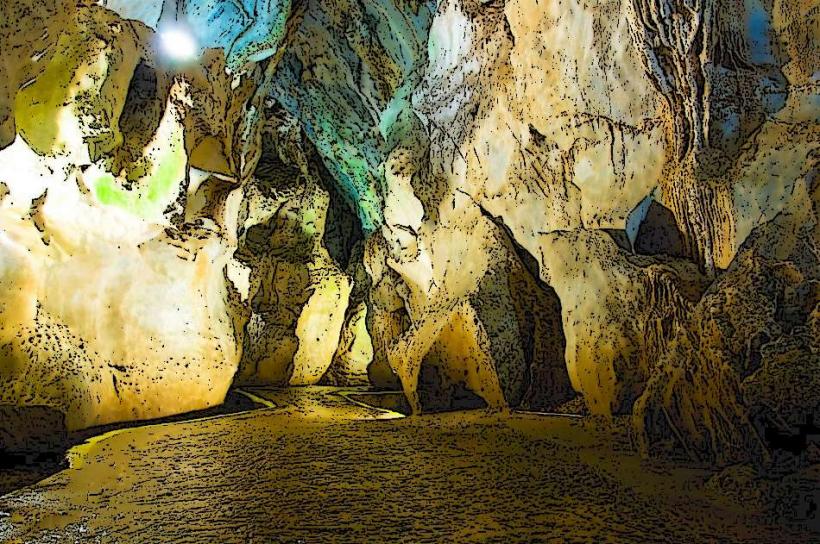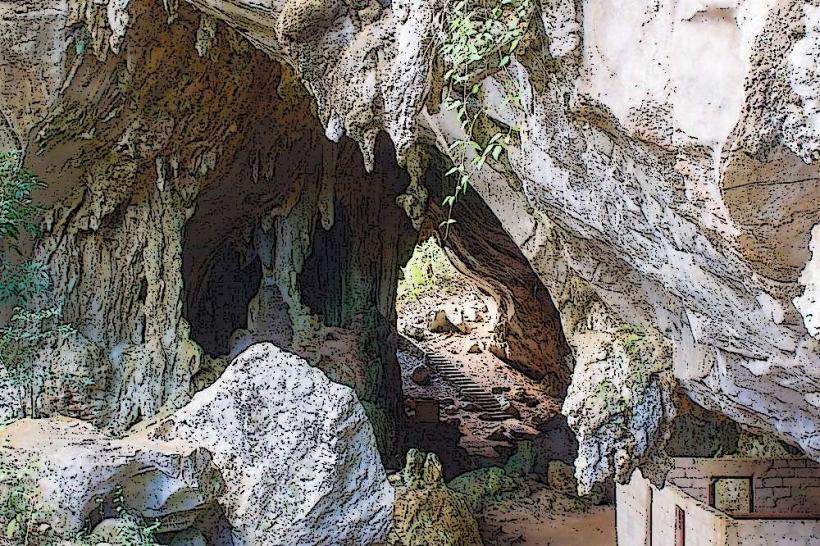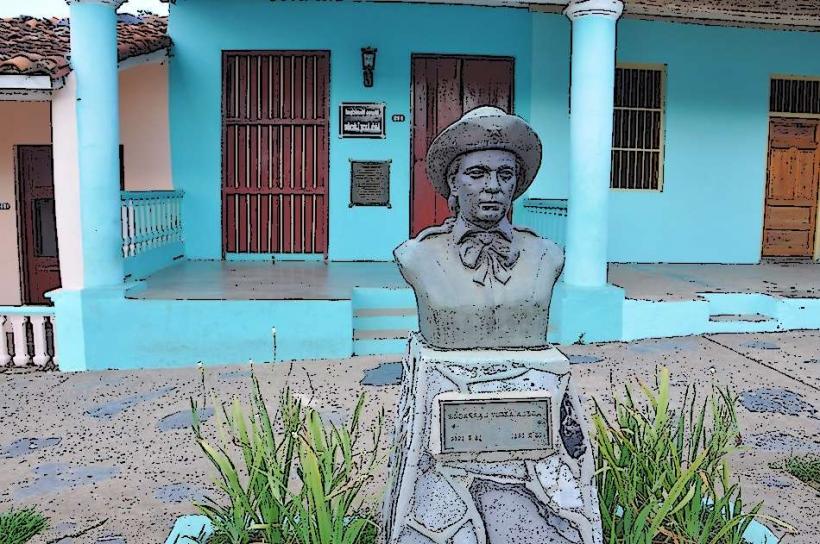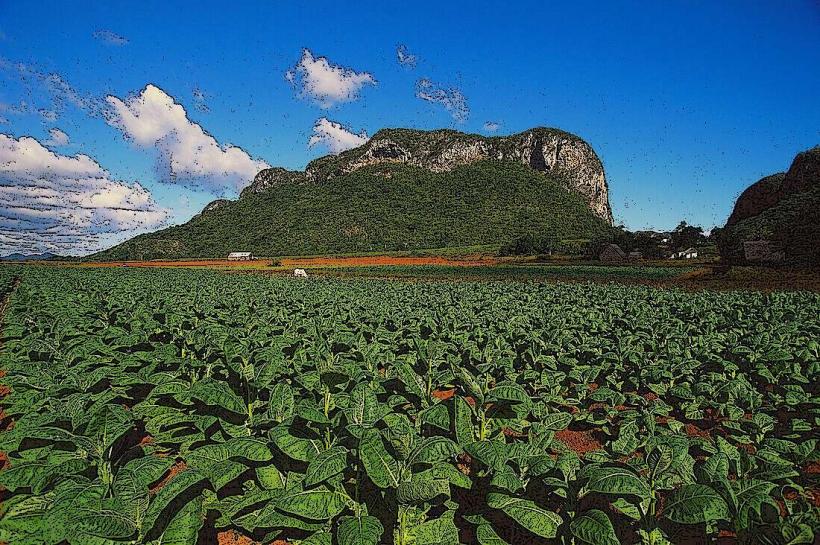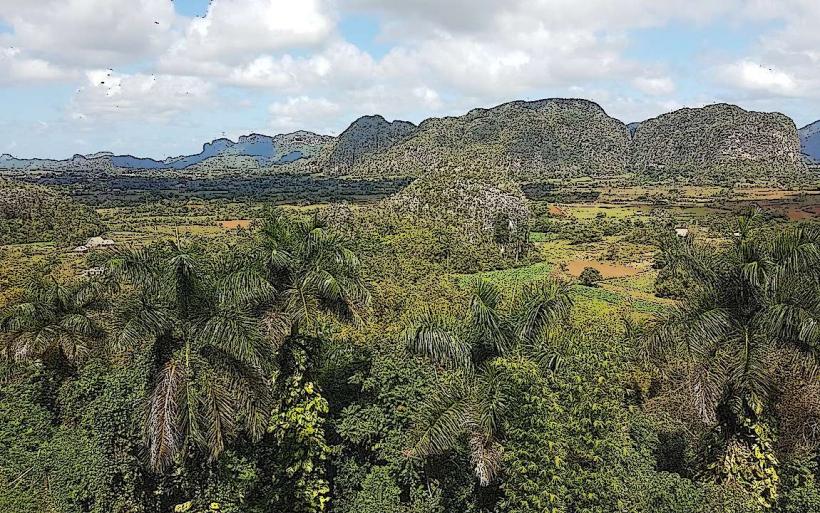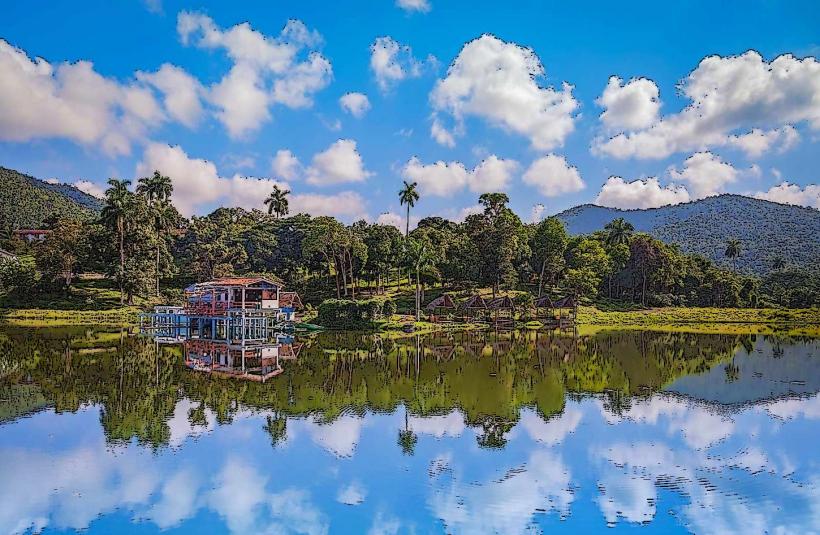Information
Landmark: Mural de la PrehistoriaCity: Pinar del Rio
Country: Cuba
Continent: North America
The Mural de la Prehistoria (Mural of Prehistory) is a massive and striking fresco located in the Viñales Valley in Pinar del Río, western Cuba. This iconic mural is one of the largest in the world, and it represents a unique fusion of art, history, and Cuban culture. Here’s a detailed look at the Mural de la Prehistoria:
Location
- Viñales Valley: Situated on the side of a limestone cliff in the Sierra de los Organos mountains, about 3 kilometers (1.9 miles) from the town of Viñales.
- Coordinates: The mural is located near the village of Dos Hermanas.
- Access: The site is easily accessible by car, and many visitors also take guided tours to learn about its history and significance.
History and Creation
- Artist: The mural was painted by Leovigildo González, a Cuban artist, in 1961.
- Inspiration: The mural was created as part of a broader project to celebrate the Cuban Revolution and highlight the island’s natural and historical heritage.
- Subject Matter: The mural illustrates the evolution of life on Earth, particularly focusing on the prehistoric past, from the early existence of life to the rise of humans and their relationship with nature.
Design and Composition
- Size:
- The mural is 120 meters (394 feet) long and 80 meters (262 feet) tall, making it one of the largest in the world.
- It is painted on the face of a limestone cliff, with the vivid colors contrasting dramatically against the natural backdrop of the Viñales Valley.
- Depictions:
- Prehistoric Animals: The mural features dinosaurs, mammoths, and cavemen, alongside other ancient animals that once roamed the Earth. These figures represent the early stages of life on the planet.
- Evolution: The artwork is divided into sections that depict the evolution of life, starting from the prehistoric age, with early forms of life in the sea, moving to land animals, and culminating in human figures, including a depiction of a Cuban aboriginal man.
- Fertility and Agriculture: The latter part of the mural portrays the rise of agriculture, with symbols of crops and tobacco, emphasizing the region's agrarian significance.
- Cultural Representation:
- The mural also touches on Cuba’s indigenous history, with the inclusion of native people, particularly in their role as early cultivators of crops like tobacco, which remains a cultural and economic cornerstone of the region.
- The work conveys a narrative that links Cuba’s ancient history with the modern-day importance of agriculture, particularly tobacco farming.
Significance
- Cuban Identity:
- The mural plays a key role in Cuban cultural identity, linking the Revolutionary era with a broader sense of history and national pride.
- It embodies Cuba’s belief in the progression of life from prehistoric times to modern agriculture and the revolutionary ideals of progress and growth.
- Artistic Achievement:
- The Mural de la Prehistoria is a monumental work of art that blends Cuban history, political ideology, and natural beauty into a single artistic expression.
- Its size, color, and subject matter make it one of the most remarkable pieces of public art in the world.
Visiting the Mural
- Visitor Experience:
- Scenic Views: The mural is set against the stunning backdrop of the Viñales Valley, providing visitors with magnificent views of the valley’s karst mountains (mogotes), tobacco fields, and rural landscape.
- Tours: Guided tours are available at the site, where knowledgeable guides explain the history and meaning behind the mural. Some tours may also include a visit to the nearby tobacco plantations, linking the mural’s agricultural themes with the present-day importance of tobacco in the region.
- Photo Opportunities:
- The Mural de la Prehistoria offers excellent photo opportunities, both of the mural itself and the surrounding valley. Early mornings or late afternoons provide the best lighting for photography, with the sun casting warm tones across the landscape.
Nearby Attractions
- Viñales Valley:
- Apart from the mural, the Viñales Valley is home to tobacco farms, caves (such as Cueva del Indio), and other cultural and natural sites. It is a UNESCO World Heritage Site and offers opportunities for hiking, horseback riding, and exploring Cuba’s agricultural traditions.
- Cueva del Indio:
- A famous cave near the mural, which contains an underground river and can be explored by boat.
- Mirador de los Jazmines:
- A nearby viewpoint that offers breathtaking panoramic views of the Viñales Valley and the surrounding mountains.
Practical Information
- Opening Hours: The mural is accessible year-round, with the best time to visit being during daylight hours. Guided tours are usually available from early morning until late afternoon.
- Entrance Fee: There is typically a small fee to visit the site. The cost varies depending on whether you opt for a guide or visit the area independently.
- What to Bring:
- Comfortable shoes for walking and exploring the area.
- A camera to capture the stunning views and artwork.
- Sunscreen and a hat for protection from the sun.
- Water, especially if you plan on hiking or walking around the area.
Conclusion
The Mural de la Prehistoria is not only a stunning piece of public art but also a symbol of Cuba’s rich cultural and natural heritage. Set within the breathtaking landscape of Viñales Valley, it offers visitors a chance to reflect on the country’s history, from prehistoric times through the agricultural roots of tobacco farming. A visit to this monumental mural provides a unique opportunity to connect with Cuba’s past and present, all while enjoying the spectacular natural beauty of the region.

